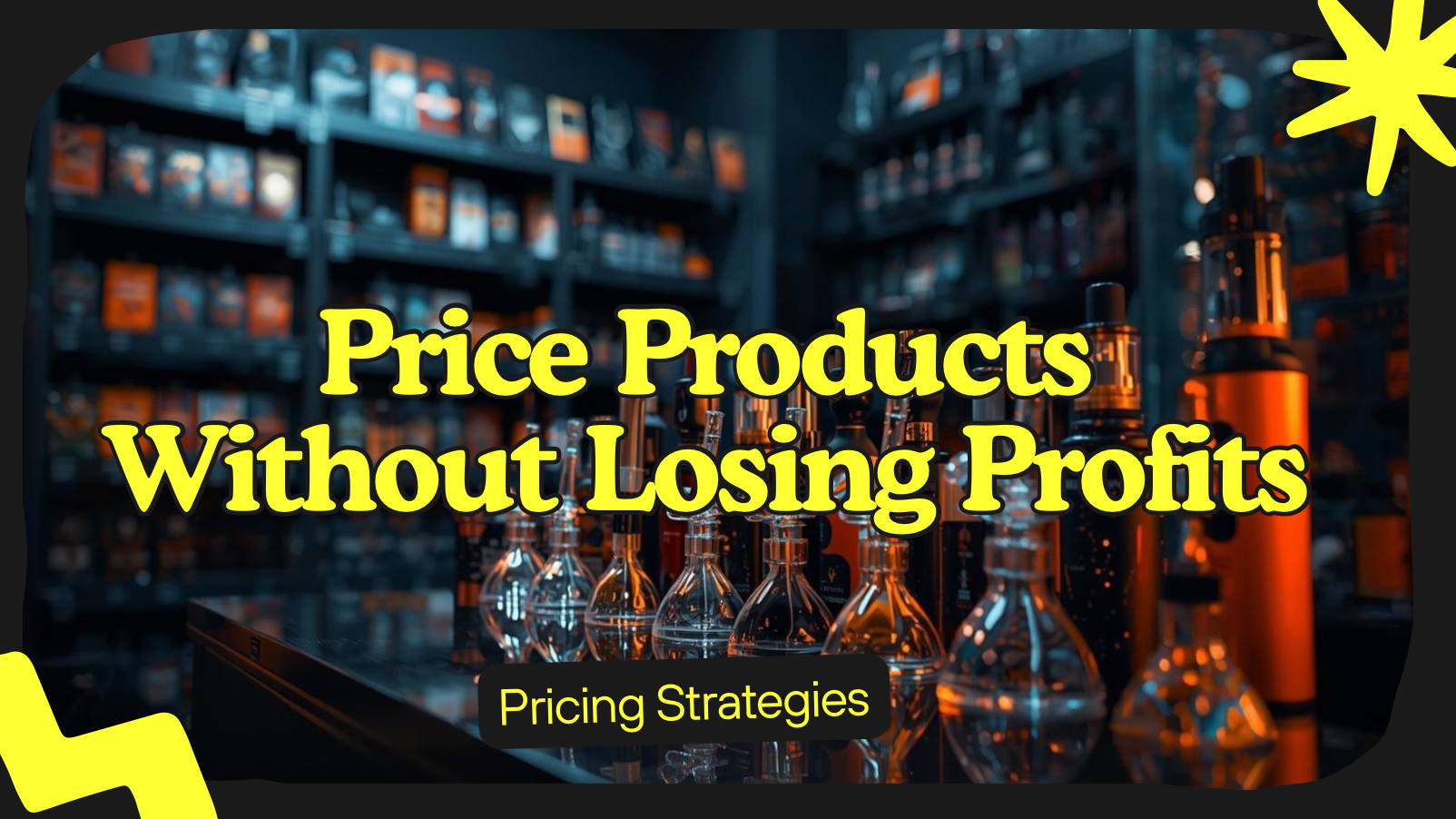Pricing is where most smoke shop owners either leave money on the table or price themselves out of business. Some think being the cheapest shop in town is a winning strategy. Others slap random markups on everything without understanding their actual costs. Both approaches are sloppy, and sloppy pricing will kill your profits faster than theft ever will.
The truth? Pricing is both math and psychology. You’ve got to cover your costs, earn a profit, and position your shop correctly in the market—all without confusing or turning off your customers. Let’s break it down the no‑BS way.
Step 1: Know Your Real Costs
You can’t price correctly if you don’t know what it really costs to get a product on your shelf.
Costs to include:
-
Wholesale cost – what you paid the distributor.
-
Shipping/freight – rolled into the landed cost.
-
Taxes & fees – excise, state, or local taxes where applicable.
-
Overhead share – rent, utilities, payroll divided by product mix.
Most owners only think about wholesale price. Wrong. If your landed cost is $10 but overhead adds another $2 per unit, your real cost is $12. Price from that number, not the invoice.
Step 2: Use Category-Based Markups
Not all products deserve the same margin. You’ve got to price based on category and velocity.
-
Fast movers (wraps, coils, disposables): Lower margins, higher volume. 30–50% markup is common.
-
Mid movers (CBD, juices, torches): Medium margins, steady demand. 50–70% markup.
-
Slow movers (glass, rigs, premium products): Higher margins to cover risk. 100–200% markup.
The key: balance volume vs. margin. Don’t try to get rich on wraps. Do make sure your high‑end glass makes up for the shelf space it eats.
Step 3: Stop Competing Only on Price
If your entire strategy is “I’m the cheapest,” congratulations—you’re racing to the bottom.
The dangers:
-
Customers get trained to shop only for discounts.
-
Competitors can undercut you and steal loyalty.
-
Margins get razor thin, and cash flow suffers.
Instead:
-
Compete on service (knowledgeable staff).
-
Compete on experience (clean, organized shop).
-
Compete on selection (you carry what others don’t).
Price matters, but it’s not the only thing that keeps customers coming back.
Step 4: Build Psychological Pricing Into Your Strategy
Pricing isn’t just math—it’s perception.
-
Charm pricing: $9.99 feels cheaper than $10.
-
Tier pricing: Offer three levels (budget, mid, premium). Most buyers pick the middle.
-
Bundle pricing: “Buy a mod, get juice at 20% off.” Increases average ticket size.
-
Anchor pricing: Place a premium glass piece next to mid‑tier ones. Makes mid‑tier look affordable.
The way you present prices influences how customers spend.
Step 5: Factor in Local Competition
Yes, you should know what the guy down the street charges. But don’t obsess over matching him.
-
If you’re higher, justify it with better service and selection.
-
If you’re lower, make sure margins still work.
-
Stay within a fair range of the local market—too far off, and customers notice.
Be aware, but don’t be a slave to competitor pricing.
Step 6: Set Minimum Profit Standards
You should never sell anything that doesn’t meet your minimum profit threshold.
Rules to set:
-
Minimum margin on fast movers (30%+).
-
Minimum margin on mid movers (50%+).
-
Premium items must at least double.
If an item can’t meet these standards, drop it or renegotiate with your supplier. Don’t tie up money in dead products with weak margins.
Step 7: Adjust Prices for Shrinkage and Risk
Shrinkage (theft, damage, spoilage) is a real cost in smoke shops. If you don’t account for it, it comes out of your pocket.
-
Add a buffer margin to cover expected loss.
-
Pay special attention to high‑theft items (disposables, wraps).
-
Rotate inventory fast to reduce spoilage (especially CBD or juices).
Protect your bottom line before it evaporates.
Step 8: Train Staff on Pricing Discipline
Pricing only works if your staff respects it.
-
No unauthorized discounts.
-
Always scan items properly.
-
No “hooking up friends” at the register.
-
Teach upselling instead of discounting.
Employees can either protect or destroy your margins. Train and hold them accountable.
Step 9: Review and Adjust Quarterly
Pricing isn’t “set it and forget it.” Costs shift. Trends shift. Laws change.
-
Review top 50 sellers every quarter.
-
Compare landed cost vs. retail vs. margin.
-
Adjust weak categories before they drag you down.
-
Use slow months to test new strategies.
Stay proactive, or your pricing will fall behind the market.
Step 10: Don’t Be Afraid of Premium
Some owners are scared to price high‑end items aggressively. Big mistake.
Premium customers exist. They want unique glass, exclusive disposables, or custom rigs. If you undervalue those, you’re leaving massive money on the table.
Price premium like premium—because the right buyers will pay.
Final Word
Pricing is survival. If you get it wrong, your business bleeds cash until it dies. If you get it right, your shop stays profitable, competitive, and positioned for growth.
Stop guessing. Stop copying competitors. Build a pricing strategy based on real costs, category velocity, psychology, and market awareness. Then review it relentlessly.
Your margins are your oxygen. Protect them.

